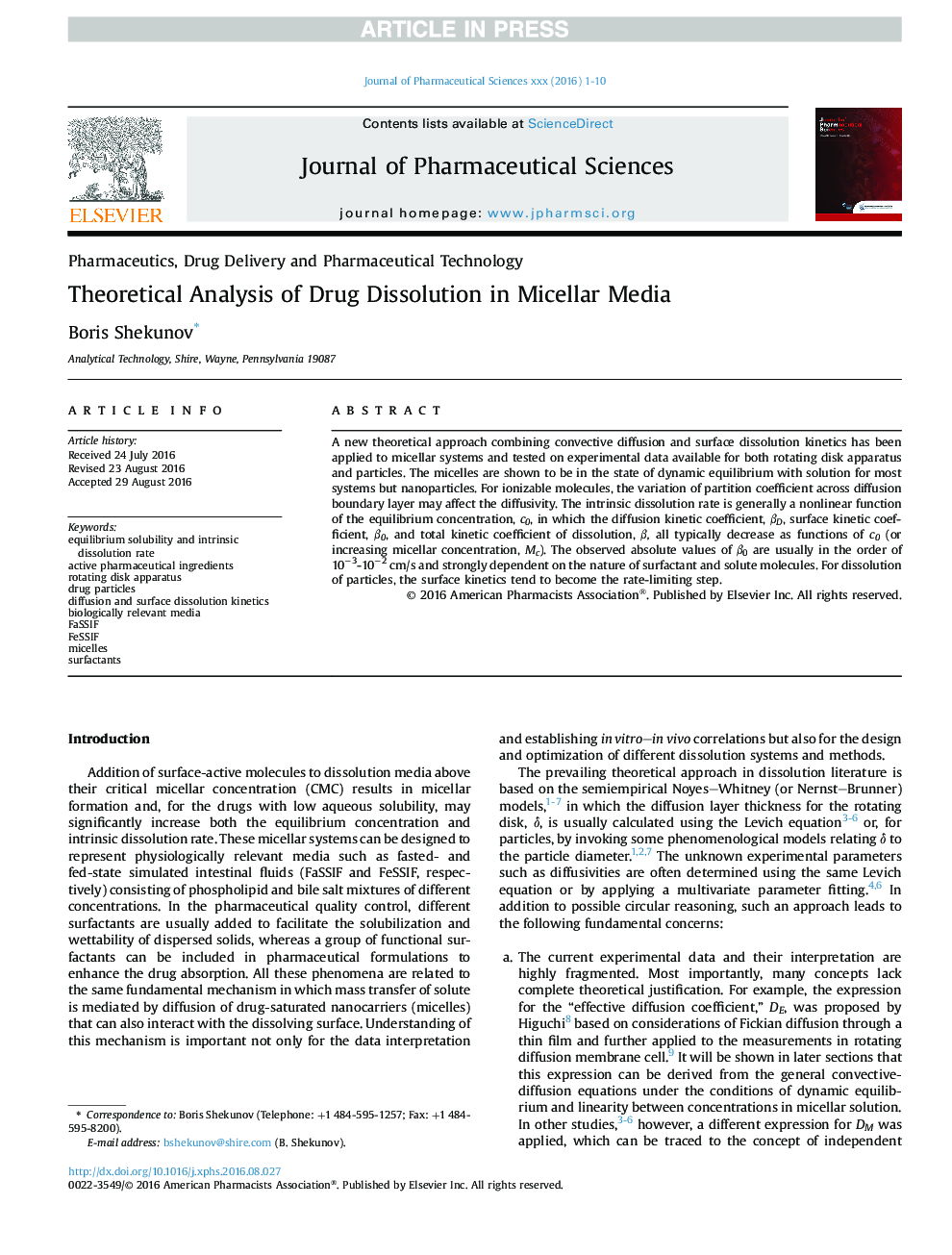| Article ID | Journal | Published Year | Pages | File Type |
|---|---|---|---|---|
| 8514617 | Journal of Pharmaceutical Sciences | 2017 | 10 Pages |
Abstract
A new theoretical approach combining convective diffusion and surface dissolution kinetics has been applied to micellar systems and tested on experimental data available for both rotating disk apparatus and particles. The micelles are shown to be in the state of dynamic equilibrium with solution for most systems but nanoparticles. For ionizable molecules, the variation of partition coefficient across diffusion boundary layer may affect the diffusivity. The intrinsic dissolution rate is generally a nonlinear function of the equilibrium concentration, c0, in which the diffusion kinetic coefficient, βD, surface kinetic coefficient, β0, and total kinetic coefficient of dissolution, β, all typically decrease as functions of c0 (or increasing micellar concentration, Mc). The observed absolute values of β0 are usually in the order of 10â3-10â2 cm/s and strongly dependent on the nature of surfactant and solute molecules. For dissolution of particles, the surface kinetics tend to become the rate-limiting step.
Related Topics
Health Sciences
Pharmacology, Toxicology and Pharmaceutical Science
Drug Discovery
Authors
Boris Shekunov,
